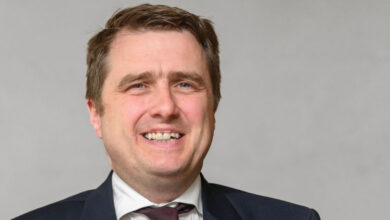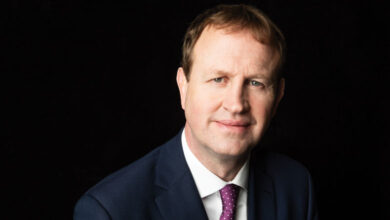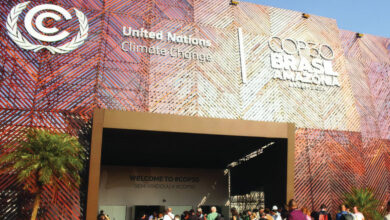Sinn Féin unveils proposals for all-island health service

With record-high waiting lists and budgetary constraints in the North alongside a growing gulf between HSE and private provision in the Republic, Sinn Féin has published a discussion paper for cross-border healthcare provision, and eventually an all-island health service.
The proposals promise a “root and branch revision” of both systems as opposed to a simple merge of unperforming provisions. The discussion paper, titled, The case for an Irish National Health and Care Service, outlines steps to improve cooperation between services in both states with a view toward “full integration” of delivery and service on an all-island basis.
The service would be centrally funded, universal, and free at the point of access.
To build such a service, reform must be implemented in a “planned, systematic, and strategic way”, with 10 proposals outlined, requiring support from the Government and Northern Ireland Executive.
- the Shared Ireland Unit should develop costings for both the Bengoa and Sláintecare reports and costed proposals for integrating the health systems in the North and South into a single universal system;
- both Ministers of Health, alongside HSE regions and HSC trusts should lead design, planning, and collaboration for integration;
- cross-border collaboration involving health and social care experts, health economists, trade unions, and senior management alongside further and higher education institutions;
- a single waiting list system across the island of Ireland to facilitate the movement of patients across regions to reduce waiting times;
- digital health and care records should be in place from primary to tertiary care, with data sharing to support cross-border care;
- align emergency services to maximise recruitment, training, and operational capacity, with particular focus on border regions;
- national strategies and clinical programmes delivered on an all-island basis with common, comparable standards;
- all-island workforce planning to ensure sufficient graduates for the service;
- develop common professional and regulatory standards for all health and care professionals, improving access to work opportunities, professional development, and clinical governance; and
- establish a Rural Health Commission to develop a rural health strategy.
“Both health services on the island of Ireland are in crisis… A new Ireland requires a new health and care service that can meet the needs of citizens and is free at the point of delivery.”
Sinn Féin President Mary Lou McDonald TD
In the paper, Sinn Féin President Mary Lou McDonald TD says: “There are many reasons, but no excuses, for the critical state of health services on the island of Ireland.”
McDonald blamed successive Irish and British Governments for the current difficulties in health provision across the island: “They have failed to plan services according to need, to train and retain enough health and social care professionals or to modernise provision.”
McDonald claims the funding crisis in the North is caused by the “financial control of Westminster”, but there are no cost projections in the paper, instead it proposes that this task be left to the Shared Island Unit.
Sláintecare and Bengoa
Published in 2017, the Sláintecare report is the HSE and Department of Health’s “overall improvement plan and strategy for reforming Ireland’s health and social care system”.
It set out a path towards “equal access to health services for every citizen”, through “one universal health service”. It proposed reducing prescription charges, free GP care, and expansion in both primary care, social care, and mental health provision amongst its many recommendations.
It is set to cost €3.6 billion, in 2025 prices over 10 years. The perceived slow pace of implementation has been criticised, with the latest report, Sláintecare 2025+ lacking detailed costings and being described as “underwhelming” by opposition TDs.
Sinn Féin are committed to implanting the recommendations of the report, with the party’s health spokesperson David Cullinane TD previously telling eolas magazine that “a Sinn Féin government would deliver on the commitment of Sláintecare to deliver the right care in the right place at the right time”.
In the North, the Bengoa report was published in 2016 and described by then-Health Minister Michelle O’Neill MLA as enabling “wholesale transformation” of Northern Ireland’s health system which she said was “at breaking point”.
The report recommended moving treatment away from hospitals to the community alongside training GPs to become nurses. However, the proposals were criticised for lacking ambition, lacking urgency, and a lack of costings or targets.
It also failed to tackle soaring waiting lists. As of March 2025, the number of elective care patients waiting for either inpatient or daycare admission, or a first outpatient appointment has risen to 547,000. This is a near-75 per cent increase from the 313,000-figure quoted at the time of the publication of the report in October 2016.
A ‘growing debate’ on Irish unity
In its conclusion, the paper says: “On an island of seven million people… it makes no sense having two separate health services with no all-island healthcare plan.”
Deirdre Heenan argues in her paper Cross-Border Cooperation Health in Ireland that “unionists can no longer be assured that the NHS is viewed as an immutable asset”, creating an NHS-style health service could be a crucial issue in a unity plebiscite. An Irish Times poll, published in December 2022, found that 45 per cent of respondents in the North would be less likely to vote for unity if a united Ireland “adopted the health system used in the Republic of Ireland”. This compared to 50 per cent being more likely to vote for unity if an NHS-style system was in place.
In a Sunday Independent poll in August 2025, 15 per cent of respondents in the Republic placed healthcare as one of the “two most important issues to deal with”, compared to just 1 per cent for Irish unity.





